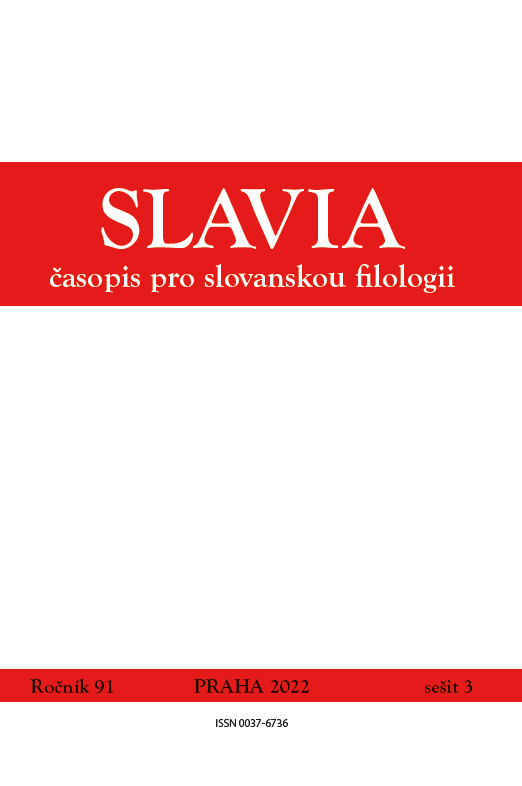Rumunská církevní a administrativní slovanština
Romanian Church Slavonic and Chancery Slavonic
Author(s): Vladislav KnollSubject(s): Theology and Religion, South Slavic Languages
Published by: AV ČR - Akademie věd České republiky - Slovanský ústav and Euroslavica
Keywords: Church Slavonic; Romanian Slavonic; Wallachian Slavonic; Moldavian Slavonic; Old Romanian; chancery language;
Summary/Abstract: The article presents a short overview of the complexity of written Slavonic varieties used in the Romanian Speaking Lands (Wallachia, Moldavia and partly Transylvania) between the 14th and the early 18th centuries. This epoch, usually called the (Classical) Cultural Slavonism, can be divided into three main periods: the early, the peak and the late ones. The prestigious variety in the early and peak periods was the Trinovitan (Tărnovo) variety of Middle Church Slavonic. In Wallachia, it was used together with the Resavian variety. The Church Slavonic segments in administrative texts followed a specific norm, mostly different from the one used in books. In the late phase, the Early New Church Slavonic started to be used (first in Wallachia). The chancery languages were submitted to quick development during the early period. In Wallachia, this caused the switch of a hybrid Church Slavonic with Bulgarian language background towards a Shtokavian-based language with Romanian morphosyntax (Wallachian Slavonic). The Ruthenian-based chancery language in Moldavian internal documents suffered a huge impact of Church Slavonic, which made the Ruthenian elements to be preserved only in few fixed expressions. In both Moldavia and Wallachia, the character of the language was connected to the function of the text. In Wallachia, the proportion of Church Slavonic and Wallachian Slavonic depended on the type of the document or text. In Moldavia, the most remarkable contrast raised between the internal chancery language and the letters on one hand (Church Slavonic with few Ruthenian rests and some Wallachian impact) and the correspondence with Poland using a Polonized Ruthenian on the other hand.
Journal: Slavia - časopis pro slovanskou filologii
- Issue Year: XCI/2022
- Issue No: 3
- Page Range: 257-282
- Page Count: 26
- Language: Czech
- Content File-PDF

